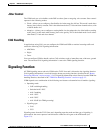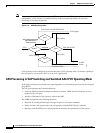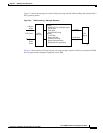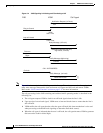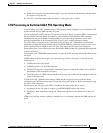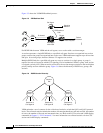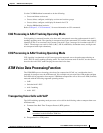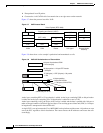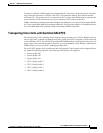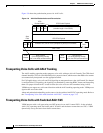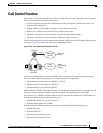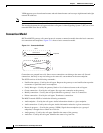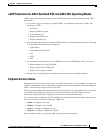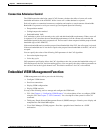
3-13
Cisco VISM Installation and Configuration Guide
Release 3.0, Part Number OL-2521-01 Rev. D0, June 2004
Chapter 3 VISM Functional Description
ATM Voice Data Processing Function
To improve reliability, VISM supports two independent OC-3 interfaces, each connected to a separate
edge router and each with its own PVC. One PVC is designated the primary PVC and the other the
secondary PVC. The primary circuit is used unless it fails, in which case VISM switches automatically
to the secondary circuit. Switchover may cause a temporary 250-ms delay on the lines.
VISM communicates with the packet network about transmitting the voice payload by using the SONET
OC-3 port on the MGX 8000 series platform PXM card. Voice payload samples are formatted and sent
across the MGX 8000 series platform cellbus and onto the SONET connection.
Transporting Voice Cells with Switched AAL2 PVC
The switched AAL2 PVC operating mode transports voice cells with up to 64 PVCs. Multiple calls can
share a single AAL2 connection simultaneously using a CID. Each PVC is assigned a virtual connection
circuit identifier (VCCI). The VCCI/CID to endpoint/DS1/DS0 binding is made dynamically by the call
agent as part of the call setup procedure. However, you can permanently set the binding—which makes
VISM operate as if it were in AAL2 trunking operating mode.
The AAL2 PVC supports AAL2 profiles and mid-call upspeeds. Codec changes can be supported if they
are within the agreed upon profile. The following AAL2 profiles are supported:
• Custom profile 100
• Custom profile 101
• Custom profile 110
• ITU-T I.366.2 profile 1
• ITU-T I.366.2 profile 2
• ITU-T I.366.2 profile 7
• ITU-T I.366.2 profile 8



